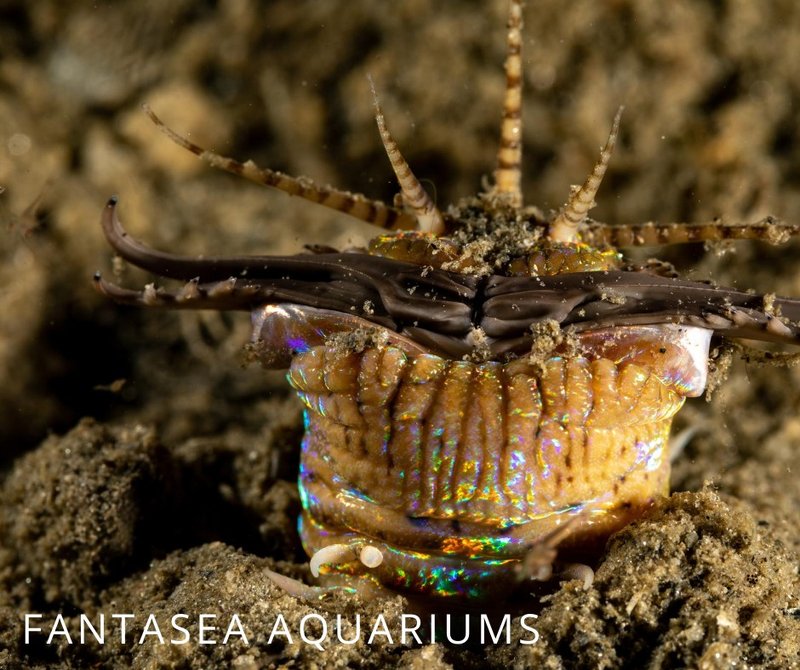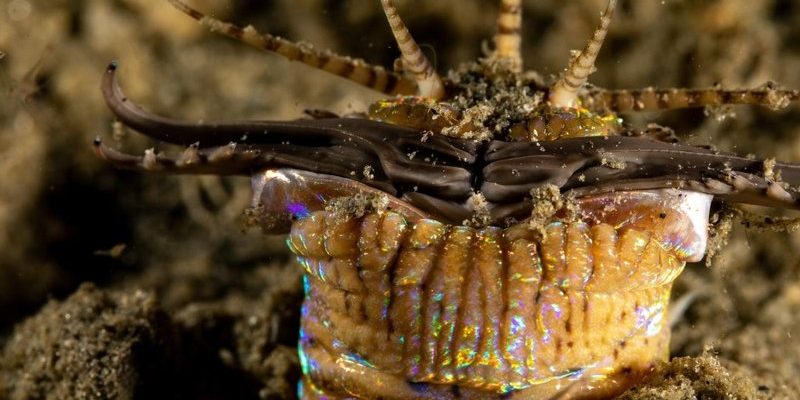
Imagine you’re sifting through the sand at the beach, looking for seashells. You find a beautiful one, only to discover it hides a nasty surprise inside. That’s kind of what it’s like with bobbit worms. They might look harmless at first, but these marine creatures can wreak havoc on your tank if not properly managed. In this article, I’ll walk you through practical steps to ensure your reef tank stays bobbit worm-free.
What Are Bobbit Worms and Why Should You Care?
Bobbit worms are fascinating, yet somewhat terrifying, creatures that can grow up to three feet long! They live in the sand and mud of the ocean floor, often camouflaging themselves against any potential threats. While they may look interesting, they can become predators in your reef tank, attacking fish and other small invertebrates.
Honestly, the last thing you want in your beautiful setup is a creature that could potentially harm your fish or disturb the balance of your ecosystem. Bobbit worms are generally harmless to humans, but once they settle into your tank, getting rid of them can be tricky. So, understanding what they are and their behaviors can help you avoid them right from the start.
How Bobbit Worms Get Into Your Reef Tank
Bobbit worms often come into reef tanks via live rock or sand that you might purchase for your aquarium. If these materials aren’t properly sourced or cleaned, they can harbor these pests. Imagine buying a gorgeous rock, only to find out that a not-so-friendly worm is hiding inside!
Another way they can sneak in is through live fish or invertebrates. Sometimes, fish stores might unintentionally introduce them during shipping or handling. Here’s the thing: if you don’t take the right precautions, bobbit worms can easily make your tank their home.
How to Spot Bobbit Worms Before It’s Too Late
Identifying a bobbit worm before it wreaks havoc is crucial. A bobbit worm typically hides during the day and comes out at night. You might catch them peeking out of a burrow or moving around the substrate. Keep an eye out for the following signs:
- Long, thin body: They can appear like a flexible, segmented worm.
- Appendages: Look for their feathery gills that can resemble a plume.
- Behavior: If you notice strange movements in the sand during nighttime, it might be time to investigate.
If you suspect there’s a bobbit worm in your tank, act quickly!
Preventing Bobbit Worms in Starter Kits
Starting your reef tank on the right foot is key to avoiding bobbit worms. Here are a few steps you can take during setup to reduce the risk:
1. **Source Live Rock and Sand Carefully**: Opt for reputable vendors who guarantee their products are pest-free.
2. **Inspect Everything**: Before introducing new items, do a thorough inspection. Look for any visible signs of worms or pests.
3. **Quarantine New Additions**: Before adding new fish or invertebrates, consider setting up a quarantine tank. This not only helps in identifying pests but also allows you to treat any illnesses.
Following these steps can significantly minimize the chances of bobbit worms sneaking into your reef tank.
Identifying Healthy Live Rock and Sand
When shopping for live rock and sand, it’s essential to know what to look for—besides just bobbit worm threats. Real quality materials will have signs of life without hidden dangers. Pay attention to:
- Clear Water: The water around the rocks should be clean, not cloudy.
- Colorful Coralline Algae: Healthy live rock will show signs of growth.
- No Unwanted Smells: A foul odor is often a bad sign.
If you see something off, trust your instincts and look for alternatives.
What to Do If You Find a Bobbit Worm
If, despite your best efforts, you discover a bobbit worm in your tank, don’t panic. Here’s a step-by-step guide on removing it effectively:
1. **Remove the Rock**: If the worm is in a piece of live rock, gently take it out of the tank.
2. **Use Tweezers or Forceps**: Carefully grasp the worm and pull it out. Make sure you’re getting the whole body to prevent regrowth.
3. **Dispose Responsibly**: Since bobbit worms can be resilient, ensure you dispose of them far from any aquarium settings.
Removing one of these critters can be tricky, but it’s feasible with the correct approach.
Keeping Your Reef Tank Healthy
Beyond just avoiding bobbit worms, maintaining a healthy reef tank involves several important practices:
- Regular Maintenance: Clean your tank regularly and monitor water quality.
- Adequate Feedings: Feed your fish properly to avoid stressing them out, which can attract unwanted pests.
- Community Awareness: Keep an eye on all tank inhabitants; certain species can help deter unwanted pests.
All these steps create a robust environment that not only keeps bobbit worms at bay but also supports a vibrant reef ecosystem.
Choosing the Right Reef Tank Starter Kit
Not all starter kits are created equal. When selecting one, look for features that minimize the chances of introducing pests. Check out:
– **Reputable Brands**: Some brands are known for their quality and thorough screening processes.
– **Inclusion of Cleaning Tools**: Some kits come with tools to help you maintain your tank better.
– **Helpful Guides**: A good starter kit will often include literature on pest management and tank upkeep.
The better your kit, the easier it’ll be to avoid common pitfalls like bobbit worms.
Wrapping up, setting up a reef tank can be a rewarding adventure, but it’s essential to stay vigilant against potential pests like bobbit worms. By understanding what they are, how they get into tanks, and employing preventive measures, you’re well on your way to creating a thriving underwater paradise. Just remember, a little knowledge and attention go a long way in securing your aquatic haven.

